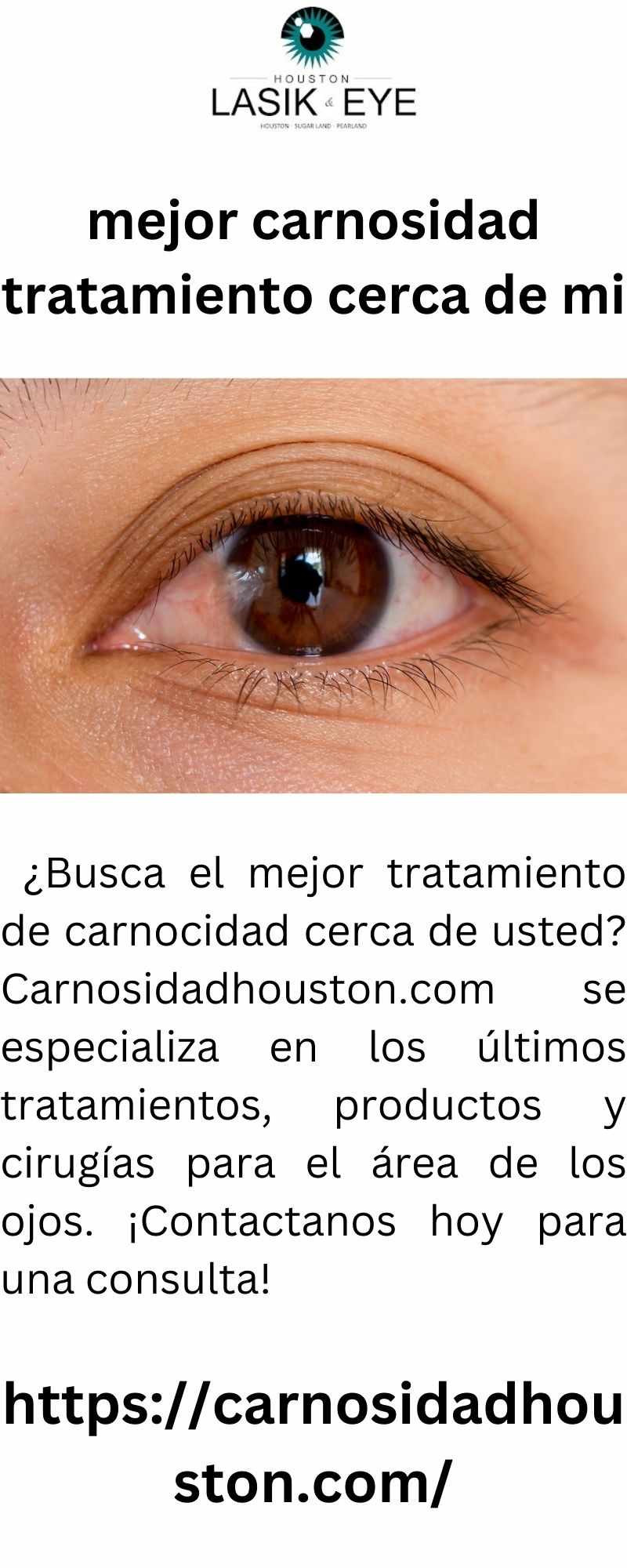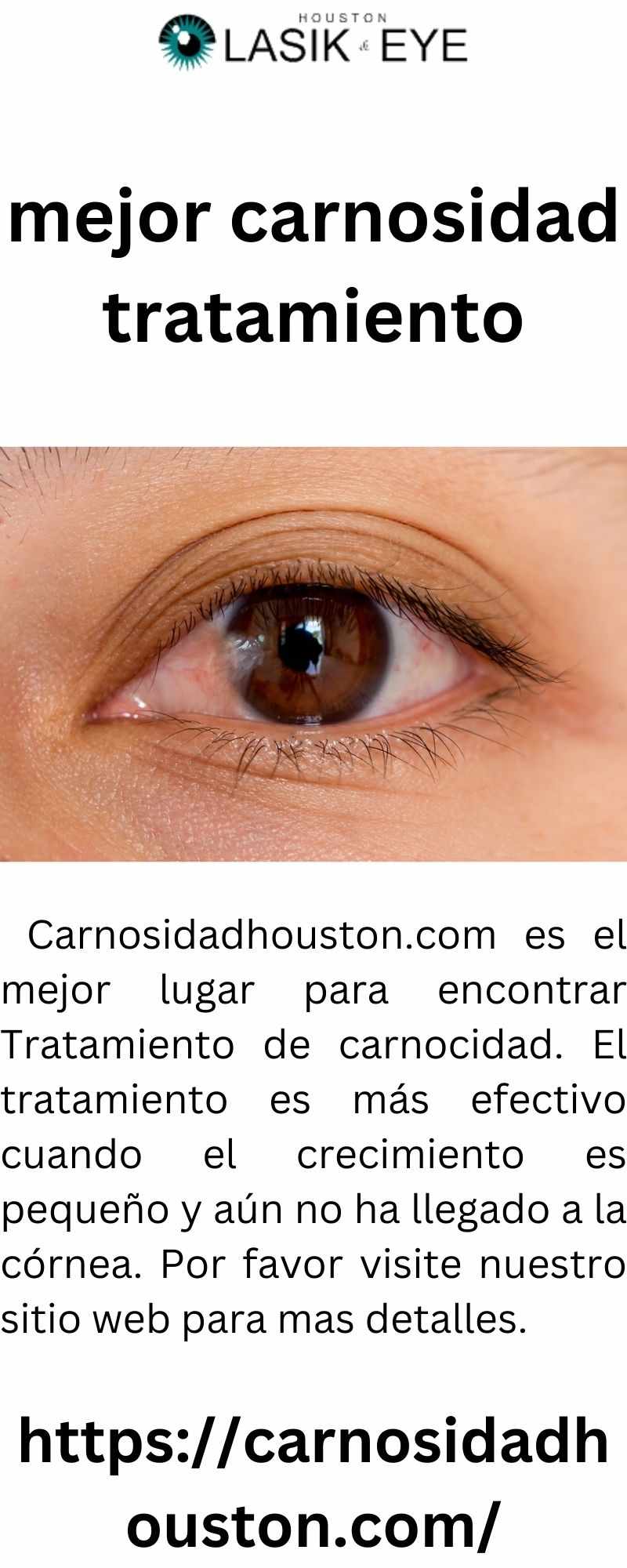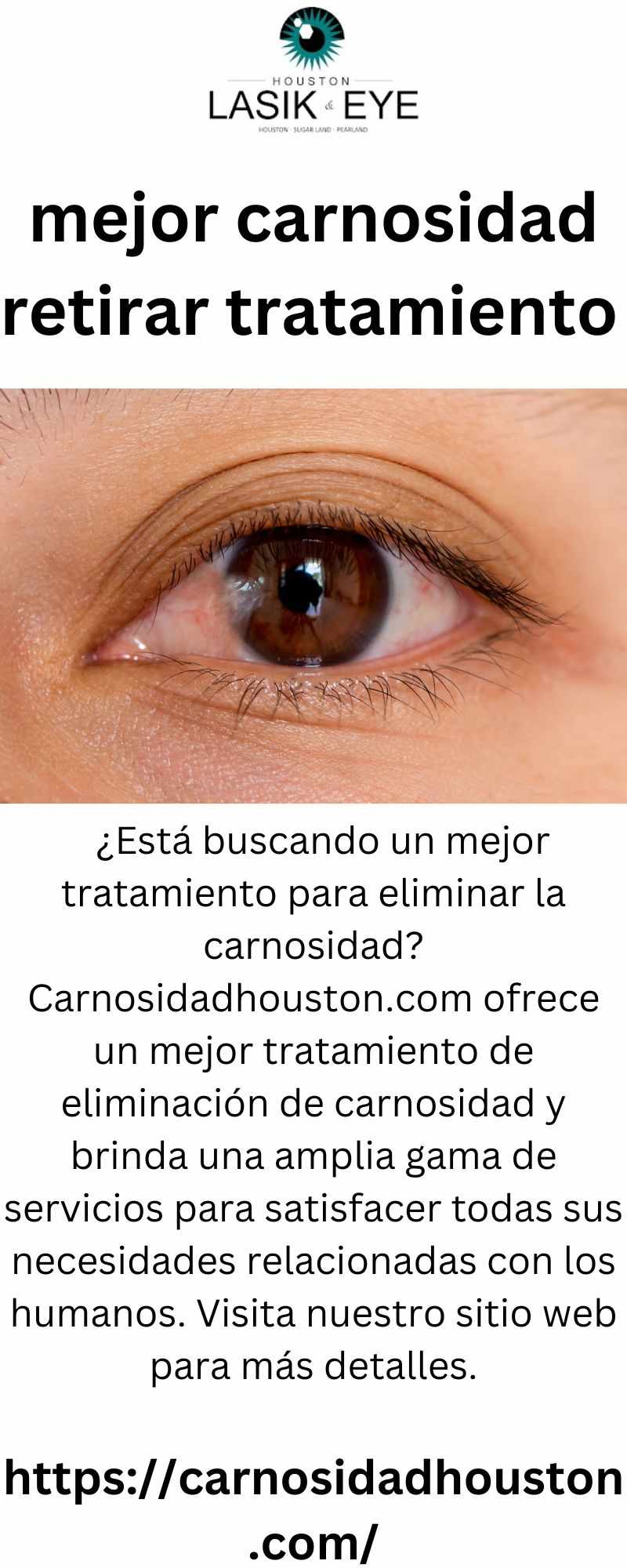Carnosidad cirugía, or pterygium surgery, is a medical procedure that addresses a common eye condition known as carnosidad, often referred to as a pterygium. This condition involves the growth of a fleshy, triangular-shaped tissue on the white part of the eye, known as the conjunctiva. When carnosidad becomes problematic, causing discomfort or vision issues, surgery may be recommended. In Houston, a city known for its cutting-edge medical facilities, individuals have access to advanced carnosidad surgery options.

Understanding Carnosidad:
Carnosidad, derived from the Spanish word for "fleshy" or "meaty," aptly describes this condition. It typically appears on the inner corner of the eye, but it can occur on the outer corner as well. Common causes of carnosidad include prolonged exposure to UV radiation, dust, and wind, particularly in regions with sunny and windy climates like Houston. Additionally, genetics and a family history of the condition can increase the risk of developing carnosidad houston.
Carnosidad can be a nuisance, causing symptoms such as:
Redness and irritation: The affected eye may become red and irritated, leading to discomfort and itching.
Vision disturbances: Carnosidad can alter the shape of the cornea, leading to astigmatism and blurred vision.
Dryness and foreign body sensation: The growth can disrupt the tear film's distribution, leading to dry eyes and a feeling of having a foreign object in the eye.
Progression: If left untreated, carnosidad may grow, covering a larger portion of the eye's surface and potentially affecting vision further.
Carnosidad Surgery in Houston:
Houston is home to numerous eye care specialists and advanced medical facilities that offer carnosidad surgery. These procedures are designed to remove the pterygium and restore clear vision while minimizing the risk of recurrence. Several surgical techniques are commonly employed, including:
Excision: This is the most common surgical approach, involving the removal of the pterygium and any affected conjunctiva. The healthy tissue is then repositioned to cover the area where the pterygium was removed.
Amniotic Membrane Transplantation: In this procedure, a thin, clear membrane derived from the inner lining of the placenta (amnion) is placed over the surgical area to promote healing and reduce the risk of recurrence.
Autograft: This technique involves transplanting a small piece of healthy conjunctival tissue from another part of the eye to replace the excised pterygium.
Recovery after carnosidad surgery generally involves the use of eye drops and close monitoring by an eye care specialist to ensure proper healing and minimize the risk of recurrence.
Conclusion:
Carnosidad cirugía in Houston offers individuals with carnosidad an opportunity to regain clear vision and alleviate discomfort. With a range of advanced surgical techniques and the expertise of eye care specialists, those affected by carnosidad in Houston can expect effective treatment and improved eye health. If you're experiencing symptoms of carnosidad, don't hesitate to consult with a local eye care professional to explore your surgical options and enhance your vision and eye comfort.







Write a comment ...